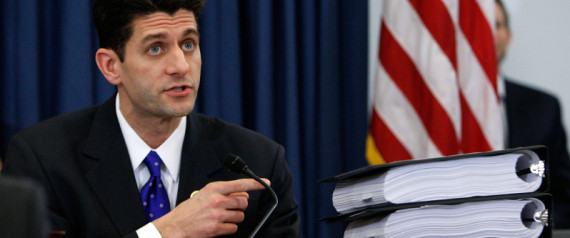WASHINGTON -- The big numbers from Paul Ryan’s budget: It will reduce spending by $6.2 trillion over the next decade and reduce the deficit by $4.4 trillion.
It also cuts the top income tax rate by nearly a third, from 35 percent to 25 percent.
A big part of the House Budget Chairman's plan rests on the assumption that President Barack Obama’s health care law will be repealed. Over the next decade, that would cut $1.4 trillion in spending alone, according to Ryan's budget. Those savings, however, wouldn't go directly to deficit reduction, because Ryan would also repeal the elements of health care reform that are aimed at raising revenue or reducing costs.
The Wisconsin Republican's budget spends less on nearly every major category of the budget. Over the next decade, Ryan (R-Wis.) wants to cut $389 billion from Medicare, the public health insurance program for seniors. Over the same period, Ryan's budget puts $735 billion less toward Medicaid, which benefits Americans too poor to afford private insurance. Discretionary spending on domestic programs is also reduced by $923 billion.
Two exceptions are security and defense spending and spending on Social Security, the public pension program for the elderly. Both are kept steady and relatively unchanged from Obama’s proposed budget.
A draft proposal from Ryan’s House Budget Committee says that under his plan, the national debt would be $1.1 trillion less than it would be over the next five years under Obama’s budget, and would add $3 trillion less to the debt than Obama’s budget proposal over the next decade. Ryan’s budget proposal would bring the debt held by the public to $13.9 trillion by 2016 and $16 trillion by 2021, compared to $15 trillion in 2016 and $19 trillion in 2021 under the president’s proposal. (The full national debt of just over $14 trillion also includes money owed to the Social Security and Medicare trust funds, but the public figure is the one normally used for budget forecasts.)
Ryan’s plan has $40 trillion in spending over the next 10 years compared to $34.9 trillion in revenues. Obama would spend $46 trillion in the coming decade while bringing in $38.8 trillion in revenues. So Ryan's plan would still result in the government spending $5.1 trillion more over the next decade than it brings in, but that’s less than the $7.2 trillion in deficit spending that Obama has proposed.
Other Story :










